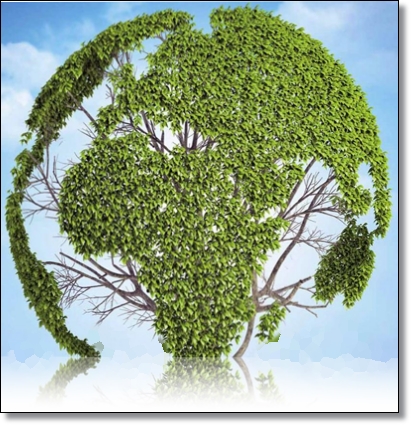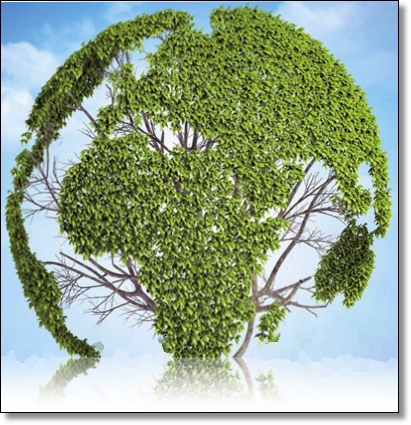Africa Embraces Green Economy

 |
This is a clear signal of continent-wide political will to accelerate the transition to a green economy. At a country level - from Rwanda to Ghana, from Morocco to South Africa, from Senegal to Kenya - the level of innovation and commitment to sustainable economic growth is remarkable.
In Kenya, for example, the government will soon launch its Green Economy Strategy and Implementation Plan (GESIP), which lays out how Kenya can increase investment in the green economy. This is simple economic sense. Investing in the green economy provides opportunities to boost growth, address poverty, create employment and improve the overall well-being of the population.
In Kenya alone, a shift in investment to green sectors would lead to an additional 3.1 million people being lifted out of poverty by 2030, and gross domestic product (GDP) 12 per cent higher than under a business-as-usual scenario.
Green investments also improve agricultural yields, on which the majority of African citizens still depend. Agriculture remains the dominant sector of the African economy - accounting for 32 per cent of GDP and supporting the livelihoods of 80 per cent of Africa's population. In Senegal, for example, the amount of arable land available will increase by 5 per cent if investments in sustainable agriculture are made.
Wealth Accounting
Africa's economy is growing fast. The World Bank estimates that growth in sub-Saharan Africa will hit 5.1 per cent by 2017. But the challenge before today's leaders is to ensure that this expansion does not come at the expense of the natural resources upon which the continent so heavily depends.
Natural capital is a critical asset, but such resources are often left out of balance sheets, meaning they are not accounted for in development processes - despite the economic value they bring and the many livelihoods and businesses they support.
For example, a recent UNEP study found that Zambia's forest ecosystems contribute $1.3 billion, roughly 6.3 per cent of GDP, to the national economy - almost double previous estimates thanks to the inclusion of value-adds such as water regulation, carbon storage and pollination. Evidence elsewhere shows that conserving natural capital creates jobs - crucial in Africa where an estimated 11 million youth are expected to join the labour market every year. Since 1995, an estimated 486,000 work opportunities were created in South Africa in environmental rehabilitation programs, including sustainable forest management and reducing invasive species.
Renewable Energy
Part of Africa's growth strategy must also involve bringing energy to all of its citizens. Over 1.2 billion people don't have access to electricity, almost half of them in Africa. As a result, many rely on wood or other biomass to cook and heat their homes, causing millions of deaths each year from indoor air pollution.
To ensure people are not left behind, we need to provide them with access to clean, reliable and efficient energy - which of course brings the co-benefit of reduced carbon emissions and pollution. In that regard, it is encouraging to note that investment in a low-carbon future is on the rise.
In 2014, we saw a US$270 billion surge in investment, up 17 per cent on the previous year, according to the most recent Global Trends in Renewable Energy Investment report from the Frankfurt School UNEP Centre and Bloomberg New Energy Finance. In developing countries, clean energy investment rose 36 per cent to US$131 billion, on track to surpass investment in developed countries.
I am delighted to note that Kenya is a major player in this shift to sustainable energy sources, with the government and private sector pursuing opportunities in geothermal, solar and wind. Another example can be found in Ghana, where the Renewable Energy Fund is a successful illustration of resource mobilization for the promotion of renewable energy sources. Ghana is now building Africa's largest solar PV plant.
Renewable energy also creates employment, as can be seen in Senegal - where investments in expanding solar and wind capacity are projected to create up to 30,000 additional jobs by 2035. This trend in growth of renewable energy is one we at UNEP support through initiatives such as the Seed Capital Assistance Facility, and I look forward to seeing further investment around the continent.
Cities
Another vital element of the green economy transition lies within cities. Africa's urban population was 41 per cent in 2012. But by 2035, around half of all its citizens will live in cities as the population approaches the two-billion mark.This is, of course, a challenge. But it is also a major opportunity. Cities have agglomeration benefits that drive innovation, business development and job creation. What matters are innovative and integrated approaches, and the way cities are designed and managed.
For example, huge opportunities exist in energy-efficient buildings and lighting. According to a 2014 study by UNEP's Finance Initiative (UNEP FI), energy-efficient buildings can deliver up to 20 per cent reductions in energy consumption and provide overall better market value for investors. Equally, a global switch to efficient on-grid and off-grid lighting would save more than US$140 billion and reduce CO2 emissions by 580 million tonnes every year.
Possibilities also exist in transport. With spending on transport infrastructure growing at an unprecedented rate across Africa, policymakers have a window of opportunity to mitigate climate change threats and ensure the health and well-being of millions of Africans by introducing clean and efficient transportation. In this regard, the Africa Sustainable Transport Forum, held in Nairobi last October, was an important step in the right direction.
The Adaptation Challenge
It is also important to focus our minds on the challenges the continent faces - chief among them climate change. Regardless of what the international community does this year in Paris, some impacts of climate change have already become unavoidable. Africa is, unfortunately, set to bear the brunt of such impacts.
By 2050, Africa's adaptation costs could rise to US$50 billion per year if global warming were to remain below 2°C, and up to US$100 billion per year if the global temperature rise were more than 4°C by 2100. This would have a severe impact on agricultural production, food security, human health and water availability - and undermine the sustainable development agenda. In Burkina Faso, for example, changes in rainfall patterns and temperatures could affect up to 30 per cent of agricultural production.
The evidence suggests that African countries - such as Ghana, Ethiopia and South Africa - are already committing resources of their own to adaptation efforts. However, international funding will be required to bridge the growing gap.
Financing
The need for financing is not limited to the climate, however. Enormous public and private investment is required for the transition to a low-carbon economy, to win the global fight against poverty and disease, and to provide high-quality education and physical infrastructure worldwide.
Indicative figures show the required additional investment flows into sustainable development will be in the range of 1 to 2.5 per cent of GDP per year from 2010 to 2050. Currently, investments in sustainable development are well below 1 per cent of global GDP.
A significant change across the world's financial system in strategy, culture and approach will be required if capital and finance are to be reallocated to accelerate the emergence of a green economy - which is why UNEP launched the Inquiry into the Design of a Sustainable Financial System.
The Inquiry, due to present its findings in October of this year, aims to engage, inform and guide policy makers, financial market actors and other stakeholders concerned with the health of the financial system and its potential for shaping the future economy.
Achieving a financial system that finances a green economy is dependent on working with all segments of the finance industry, and on bridging the dialogue gap between private finance and public stakeholders. UNEP FI is a good example of such effective partnerships. UNEP FI has 20 financial members in seven African countries, including South Africa, Kenya, Nigeria and Morocco.
Independently, several countries, such as Ethiopia, Rwanda and Mozambique, have established, or are looking to establish, special national funds to finance the implementation of their respective Green Economy Strategies. The Government of South Africa has set up a Green Fund to provide catalytic finance to facilitate investment in green initiatives - this includes funding green economy project initiation and development, research and development, and capacity-building initiatives.
This is just the beginning of what I hope will be a global move to the catalyzing the finance we need, but money doesn't solve everything. Only when coupled with sound regulatory frameworks and appropriate pricing and incentives, and only when sustainability is mainstreamed in national development planning processes, will green economy investments achieve their full potential.
In conclusion, governments across Africa are formulating green economy strategies. These strategies are already driving growth, employment and trade opportunities, as well as reducing natural risks. UNEP will be working with a wider range of stakeholders, most notably under the Partnership for Action on Green Economy (PAGE), to assist governments in developing and boosting these strategies. Four African countries are already working with PAGE - Ghana, Senegal, Mauritius and Burkina Faso - and we look forward to more. In addition, UNEP is working with the African Development Bank (AfDB) in countries such as Kenya and Mozambique. The AfDB has anchored green growth in its 10-Year Strategic plan, and established a cross-departmental Green Growth team.
With initiatives such as the above and the 3GF in place, political will to act growing ever stronger, a wealth of opportunities to draw upon, and more and more partners coming on board, Africa's growth trajectory is undoubtedly set to go green.
By Achim Steiner
Executive Director of the United Nations Environment Programme.
